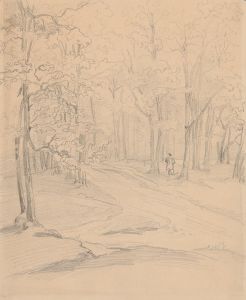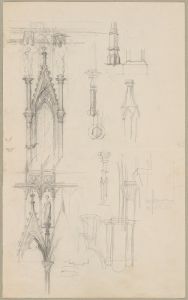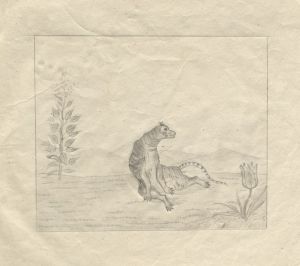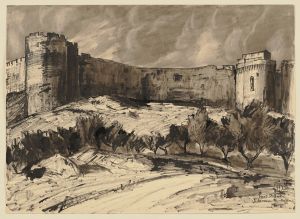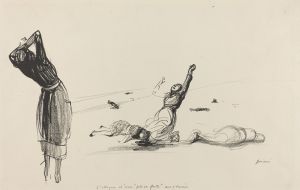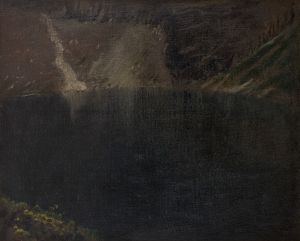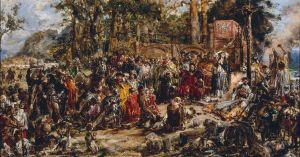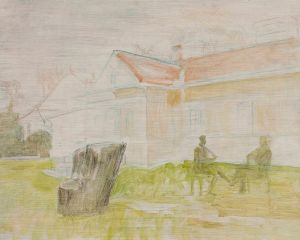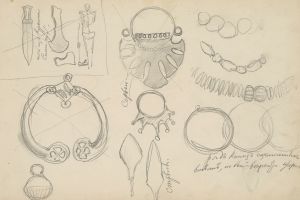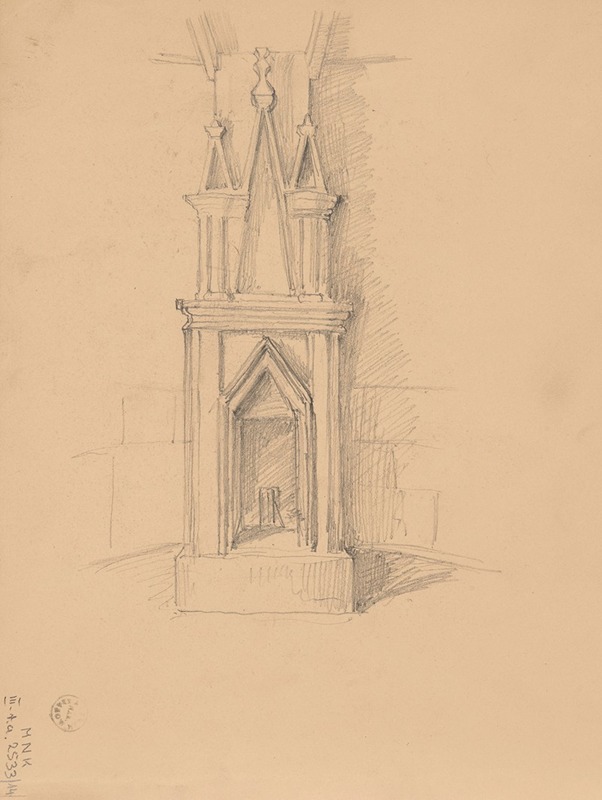
Sketch of the ruins of the castle in Smoleń
A hand-painted replica of Józef Simmler’s masterpiece Sketch of the ruins of the castle in Smoleń, meticulously crafted by professional artists to capture the true essence of the original. Each piece is created with museum-quality canvas and rare mineral pigments, carefully painted by experienced artists with delicate brushstrokes and rich, layered colors to perfectly recreate the texture of the original artwork. Unlike machine-printed reproductions, this hand-painted version brings the painting to life, infused with the artist’s emotions and skill in every stroke. Whether for personal collection or home decoration, it instantly elevates the artistic atmosphere of any space.
Józef Simmler, a prominent Polish painter of the 19th century, is known for his contributions to historical and portrait painting. Among his works is the "Sketch of the ruins of the castle in Smoleń," which depicts the remnants of a medieval castle located in Smoleń, a village in southern Poland. This artwork reflects Simmler’s interest in capturing historical and architectural subjects, a theme that was prevalent in his oeuvre.
The castle in Smoleń, often referred to as the Smoleń Castle, was constructed in the 14th century during the reign of King Casimir III the Great. It was part of a network of fortifications known as the "Eagle Nests" (Orle Gniazda), built to protect the western borders of the Kingdom of Poland. The castle, perched on a limestone hill, served both defensive and administrative purposes. Over the centuries, it fell into disrepair, eventually becoming a ruin. By the 19th century, when Simmler created his sketch, the site had already taken on a romanticized quality, emblematic of Poland's medieval heritage and its turbulent history.
Simmler’s sketch is believed to have been created during his travels, as he often sought inspiration from Poland’s historical landmarks. The artwork captures the castle’s deteriorated state, emphasizing its crumbling walls and the natural landscape surrounding it. The sketch is rendered in a style characteristic of Simmler’s attention to detail and his ability to evoke a sense of nostalgia. While primarily known for his oil paintings, Simmler’s sketches, such as this one, demonstrate his skill in other mediums and his dedication to documenting Poland’s cultural and historical legacy.
The "Sketch of the ruins of the castle in Smoleń" is significant not only as an artistic work but also as a historical record. It provides insight into the condition of the castle during the 19th century, a period when many such structures were being rediscovered and appreciated for their historical value. Simmler’s work aligns with the broader Romantic movement in Europe, which often celebrated ruins as symbols of a bygone era and national identity.
Today, the Smoleń Castle remains a site of historical interest and is part of the Trail of the Eagle Nests, a popular tourist route in Poland. Simmler’s sketch contributes to the visual documentation of this landmark, preserving its image as it appeared in the 19th century.







